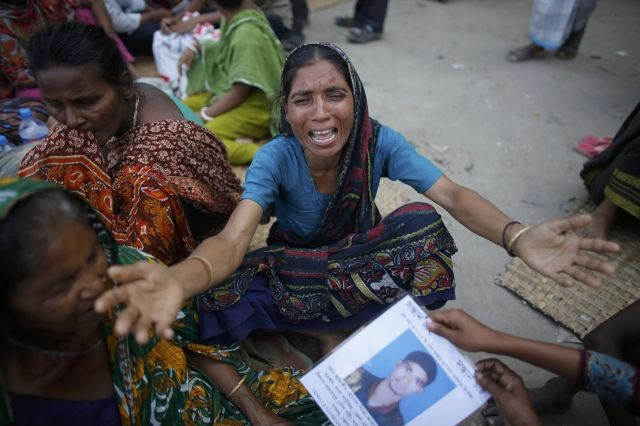Bangladesh Building Collapse: Investigator Cites Vibrations From Power Generators As The Causative Factor; Death Toll Rises To 530, But Minister Downplays Impact

The death toll in the garment factory collapse in Bangladesh climbed to more than 530 on Saturday, even as a government inquiry team investigating the disaster said four power generators inside the building may have contributed to the collapse.
The power generators, which were set up on each of the top floors in violation of construction regulations, were turned on after the power had been cut, sending powerful vibrations throughout the building, Main Uddin Khandaker, the head of the government inquiry team told the AFP.
“Together with the vibration of thousands of sewing machines, they triggered the collapse,” Khandaker, a senior home ministry official said.
Khandaker said the Rana Plaza building, which is in the commercial suburb of Savar, about 30 kilometers (20 miles) from the capital, was built “for commercial use” and not to be used as a factory, and it could not withstand the vibrations because the owner used sub-standard rods, bricks and other materials to construct it.
Meanwhile, Finance Minister Abul Maal Abdul Muhith downplayed the impact of the disaster on the garment industry, saying he did not think it was “really serious,” the Associated Press reported.
During a visit on Friday to New Delhi, the Indian capital, Muhith said the disaster would not harm Bangladesh's garment industry, which employs more than 3.6 million garment workers and comprises nearly 4,500 garment factories that manufacture clothes for foreign brands including Tesco, Wal-Mart, JC Penney, H&M, Marks & Spencer, Kohl’s and Carrefour.
The Ready-Made Garment (RMG) industry of Bangladesh makes up 80 percent of all exports, totaling more than $15 billion in the 2012-13 financial year.
“The present difficulties ... well, I don't think it is really serious -- it's an accident,” he said. “And the steps that we have taken in order to make sure that it doesn't happen, they are quite elaborate and I believe that it will be appreciated by all,” he said.
Earlier, the Bangladeshi government turned down help from both the U.K. government and the UN, which had offered to dispatch teams of experts to assist with the relief operations.
Bangladeshi Home Minister Muhiuddin Khan Alamgir pointed out that nearly 2,430 of at least 3,000 people who had been in the building survived, and that the figure was “better than the average international effort in such cases.”
On Friday, Bangladeshi police arrested an engineer who had warned about the safety of the building prior to the collapse. Engineer Abdur Razzak was arrested because he had been involved in the original construction of the building.
Friday’s arrest brought to nine the number of people who have been detained because of the Apr. 24 disaster, Reuters reported.
The building’s owner called in Razzak when cracks appeared in concrete pillars the day before the accident.
Despite his warning that the building was unsafe -- reported by Bangladeshi media hours before the disaster -- thousands of workers were sent back into the building when morning shift began the next day.
© Copyright IBTimes 2024. All rights reserved.






















